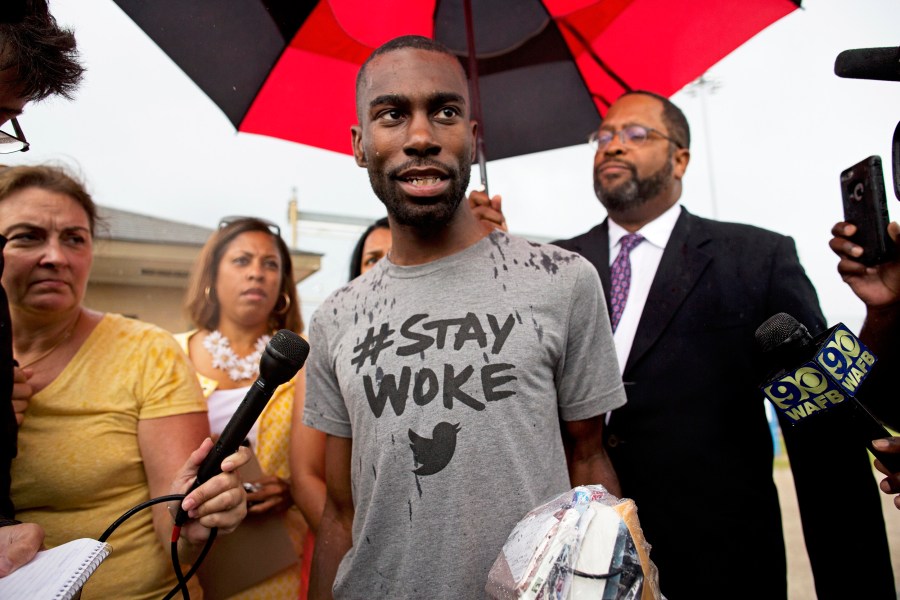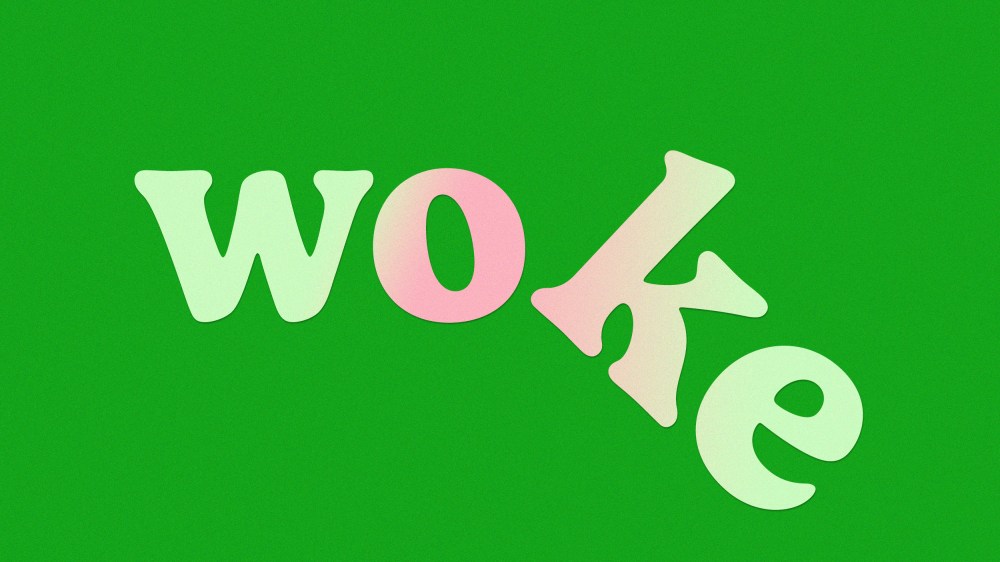In the year 2023, former President Donald Trump decided he was fed up with the term “woke.” At a rally in June, he said, “I don’t like the term ‘woke,’ because I hear woke, woke, woke. You know it’s like just a term they use, half the people can’t even define it. They don’t know what it is.” It was a striking admission from a demagogue who had long used the term to whip up reactionary fury over a supposed social revolution. Given that Trump doesn’t back away from language because it’s unclear or tainted by bad faith usage, his lament hinted at exhaustion, the realization that so-called “wokeness” can’t be milked for fearmongering the way it once could.
This is not a prediction that “woke” is about to disappear from the popular lexicon. Merely hours after Trump decried the overuse of woke, he used it in a town hall to criticize U.S. military readiness. Even so, Trump’s complaint about woke is a useful signpost for understanding the decline of a contentious term.
The term “woke” has been broken.
The term came out of Black activism and music in the early 20th century, with the phrase “stay woke” signifying elevated consciousness or an admonition to be vigilant in response to the insidiousness of white supremacy. In the 2010s it gained broader use, with the term related to but distinct from the criminal justice reform movement that gripped America from the mid-2010s through 2020. The protest movements and associated commentators sometimes used “#staywoke” as a slogan to refer to alertness to systemic racism and other systems of oppression. After the murder of George Floyd, the concept was metabolized by the mainstream. First it was taken up by white liberals and corporate America, who saw it as a call to take bigotry more seriously. Shortly thereafter there was a right-wing backlash, and eventually woke became almost exclusively used by people on the right who deployed it as a slur designating the excesses of the left and a bogeyman to organize reactionary energy. Today some people on the right still use the word, but Trump’s fatigue hints at a growing sense that overuse has degraded its power as a term of derision.

The term “woke” has been broken. It has been bludgeoned beyond recognition by the right. But that’s just part of the story. Before it was completely wrested by the right, liberals and corporations had appropriated and transformed the slogan from an appropriate call for social awareness into a set of beliefs and practices that conflated largely symbolic acknowledgements of inequality with sweeping social change. More people are catching on to how that never amounted to much — and at times was an outright scam when exploitative corporations or enemies of progress like the CIA cloaked themselves in the language of awareness of social injustice. Mainstream commentators this year dissected the limitations of “woke capitalism.” And the rare tangible programs of the era — the explosion in DEI and DEI-type initiatives in the private sector — are now receding. Their longer-term legacy might in fact be defined by the backlash to them.
Black and antiracist leftists have long warned against modes of change that focus on symbolism and are vulnerable to capture by elites. Much of the effort to raise consciousness about oppression was well-intentioned, but it was a far cry from the radical social change needed to create a meaningfully antiracist, egalitarian society. Either way, it’s evident that superficial or dishonest actors in liberal and conservative America have gotten most of what they were going to get out of “woke.” They have rendered it a dead end.
First, let’s discuss the current status of the word “woke” on the right. That the term has become cloying even to those who delighted in weaponizing it is a sign of how badly it’s been abused. Initially, in a bid to build a backlash against rising antiracist sentiment on the left, the right began to invoke the term as a harbinger of the demise of conservative white America. The war on woke was (and still is) being waged through Republican attacks on DEI initiatives and educational curricula and the circulation of books with content focused on people of color and queer experiences.

At the same time, the meaning of woke was diluted to signal the undesirability of virtually anything vaguely progressive. At one point or another, “wokeness” has been used to explain mass shootings, military recruitment woes, the collapse of banks (and for some reason the Titan submersible tragedy). Florida Gov. Ron DeSantis’ presidential campaign launch was so packed with anti-woke jargon that it was hard to understand. Some right-wing nationalists also seem to use the term to cloak vulgar racism, such as when Fox News host Laura Ingraham described a predominantly Black Christmas dance performance at the White House as “woke nonsense” intended to “offend,” but gave no substantive explanation as to what her objection was. Unsurprisingly, a word conservatives used to mean anything made it harder for them to explain and defend their agenda. In March, conservative author Bethany Mandel froze up in an interview when asked to define “woke,” despite having devoted a chapter of her recent book to it.
There are signs of diminishing returns for the right. Several right-wing boycotts of companies adopting inclusive policies or messaging in 2023 failed to make a financial dent. Polling this year indicates that woke is not a strong basis for right-wing messaging, and Republican presidential candidates have begun to cool on it, perhaps in accordance with that realization. Right-wing activist groups animated by the anti-woke agenda hit a wall in school board elections this year. Perhaps the well is drying up.
Outside of right-wing spaces, the term woke is dead. A lot of the reason for that is because the right has successfully made the term radioactive. But some of its collapse is also tied to the way that the slogan was mutated and bankrupted in predominantly white liberal spaces. I am not talking about the criminal justice reform movement, which had mixed results but was focused on specific, tangible policies. I’m talking about the subculture that was spurred by that movement but was oriented toward a broader reckoning with how racism was systemic and deeply embedded in American history and institutions.
In that moment, particularly in 2020, there was an opportunity for a huge mass of people to join or start organizations, campaigns and sustained protest movements around reparations and fighting racial inequality in housing, in the schooling system, in access to a clean environment, and many other spheres of life. There was an extraordinary opening for collectives to pursue real strategies for addressing racial segregation across American life and the Black-white wealth gap. There was a moment in which it seemed that thinking about the structural nature of racism could inspire thinking about its symbiotic relationship with capitalism — and push certain sectors of American politics in a more left-wing direction.












